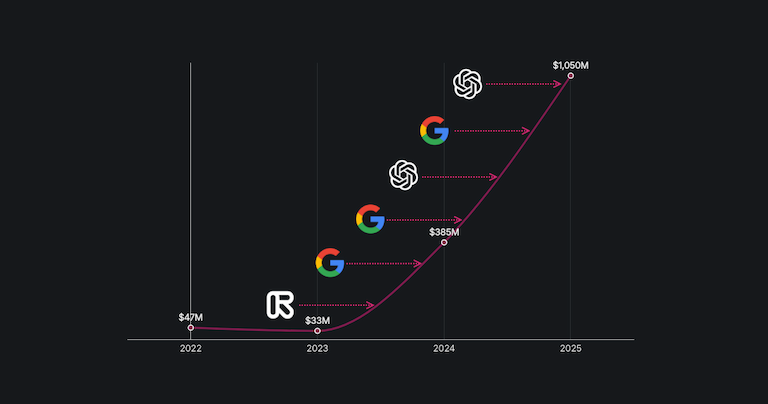Digital democracy|Artificial intelligence
The start of this decade marks a sharp rise in AI incidents
In 1983, the first AI incident listed in the AI Incident Database¹ occurred when an automated system in the Soviet Union mistakenly identified incoming missiles, almost leading to nuclear annihilation. Since then, AI has advanced significantly, and in the past few decades, it started to increasingly influence various aspects of our daily lives. Join us as we explore the timeline and frequency of recorded AI incidents.
Key insights
- 2010 marks the beginning of the decade when AI really started to become relevant to the public². The initial stage, characterized by the early implementation of AI, saw 18 incidents (just over 3% of all incidents), with an average of 5 incidents per year.
- The following stage, the growth of AI, saw 207 incidents, averaging 35 per year. These incidents accounted for 40% of all reported cases. The growth stage started in 2014, when software advancements empowered companies to make major investments in AI research, fueling progress in sectors like biotech and computing³.
- The last stage is exemplified by the development of GPT-3 by OpenAI in 2020⁴, the predecessor of ChatGPT, whose effects we actively observe in everyday life. Since then, the AI adoption stage has witnessed 293 incidents, with an average of 79 per year, accounting for 57% of all incidents across a wide range of industries.
- From 2010 to 2014, the number of yearly AI incidents did not even reach ten incidents per year. From 2014 onwards, the number of incidents grew significantly each year, with 2022 reaching 91 incidents. In fact, as of May 2023, the current year already has more than half the number of AI incidents reported in 2022, and so the growth is expected to continue.
Methodology and sources
This chart is based on the AI Incident Database, which collects, verifies, and classifies user-reported events in which harm was either caused or almost caused by AI. The data used includes incidents that are dated between 2010 and the date of collection. Data was collected on June 16th, 2023. The stages described above are not based on formally defined periods but are a guide we employ to walk the reader through the observed time period. When presenting the annual number of average incidents across stages, the last stage’s average excluded 2023, seeing how the year is not yet finished. Furthermore, the projected number of incidents in 2023 displayed in the visual was derived by finding the average number of incidents per month so far and applying it to the whole year.
For the complete research material behind this study, visit here.

